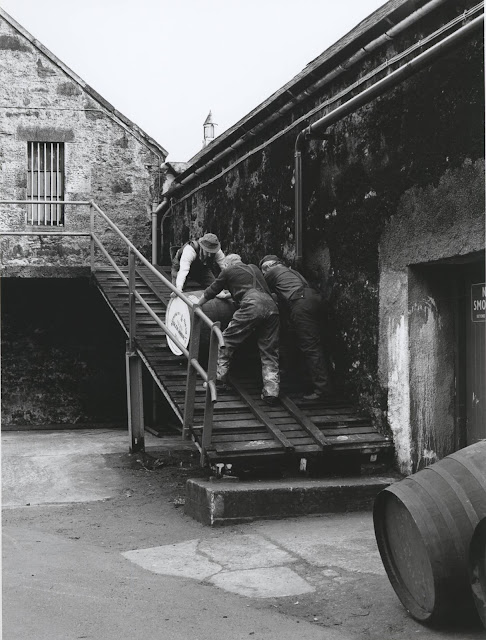Increased production
The distillery was stripped of its single malt status in the marketplace as DCL needed Highland malt for its blending needs; in an era with Caol Ila just about back online, Brora filling in with a peated new make and other distilleries being extended, modernised or driven into the ground. Glen Mhor, along with Glen Albyn, was sorely needed.
This wasn't a result of any extensions or refurbishments. In fact, the only major change during DCL's ownership was to close the Saladin maltings in 1980. Other than this, at least a three-fold increase in production was the result of the distillery working more than it had ever done so previously. Were other changes during distillation made? Shorter fermentation, standardised yeast, changes to the spirit cuts? A 1979 Gordon & MacPhail release bottled at 66.7%, would suggest that the practice of watering down distillate prior to cask filling wasn't taking place, which is more representative of cost-cutting. Overall, these are things to be determined by fact, but it seems reasonable to suggest any new owner would bring their own methodology to Glen Mhor. Especially processes that had been successful in other areas of the business.
Ultimately, the purchase of both distilleries wasn't the result of a desire. These 2 Highland distilleries that had remained independent for their lifespan, were in the right place, at the right time. However, it was a purchase forced by a need, a gaping requirement that arguably prompted the acquisition. An itch that had to be addressed without any long term strategy.
For the research, there are other avenues open, particularly right now with libraries still to unlock their doors, or with limited pandemic access. We can look to the independent sector and how it labelled some of their releases as some companies did thankfully mention the cask number and distillation date. So, let's take a look at this resource:
1965
Signatory release; distilled 18th January, cask #202
Signatory Silent Stills release; 9th December, cask #3932
Signatory release; 9th December, cask #3934
We almost have the bookends of the year here, during the tenure of Mackinlay & Birnie. It would be safe to assume during '65, around 4000 casks were filled. We could come up with some formula on the average size of a cask and work out the annual production, a good estimate would be 95% ex-bourbon casks and 5% sherry butts and produce some calculation - but I'd rather search for the statistics first. Ok, on average almost 11 casks per day, which isn't massively ridiculous across the whole year.
You could say 200 casks by 18th January is some going, but in theory perhaps not so much. We know from the quotation following selling Glen Mhor in 1972, the owners had highlighted the difficulties they were facing:
'the number of M&B's fillings has decreased due to greater integration within the industry and it is felt that this trend would continue.'
Mackinlay & Birnie (M&B) were in the business of selling casks, or fillings, and as we've seen from Railway Invoices from 1917, the early months of the year were extremely busy filling and shipping casks to blenders, who had ordered the previous year. So, the start of the season would entail such heady activity and gives us a good basis for what they did in 1965.
1978
Signatory release; distilled 21st September, casks 4041-4043
1979
Signatory release; distilled 27th February, cask 697
Gordon & MacPhail release; distilled 25th May, casks 2377-2378
In 1978, the distillery had clocked 101% of the 1965 total, with 3 months to spare. Whereas in 1979, with 6 months of the year to go, they had achieved 54.5% based on the 1965 figure. So, production was on the increase if these markers are anything to go by.
Looking further into these, in 1978, they were averaging 15.31 casks per day, which suggests an annual total of 5589 casks, or 139% of the '65 total. Now I know, casks weren't filled every day, and there would have been some downtime for repairs etc. But the clear trend is upwards.
Moving into 1979 and applying the same principles. Glen Mhor was averaging 16.4 casks per day, giving a possible output of 5986 casks, or within touching distance of 150% on the 1965 total. Reinforcing the trend, but also requiring some debate as to what Glen Mhor was producing prior to the takeover. There is an increase, but perhaps not as sizeable as once believed? Or was 1965, in the midst of a whisky boom, a bad year for us to base our theories upon?
As with most things in life, the truth is arguably somewhere in between. What might be more stimulating are the 1970 and 1971 totals for casks filled. However, as we've used up the independent label resource for now, we'll just have to hunt down those figures, which I know M&B kept and they will be unearthed, one day.


Comments
Post a Comment